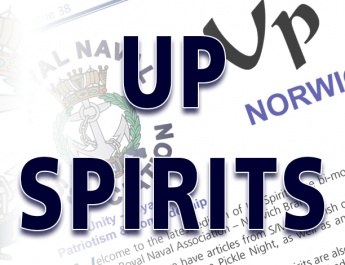At 06:00, Holland ordered his force to turn once again to port to ensure that the aft main guns on both Hood and Prince of Wales could bear on the German ships. During the execution of that turn, a salvo from Bismarck, fired at a range of about 9 mi (7.8 nmi; 14 km), was seen by men aboard Prince of Wales to straddle Hood abreast her mainmast. It is likely that one 38 cm (15 in) shell struck somewhere between Hood‘s mainmast and “X” turret aft of the mast.
This was immediately followed by a huge pillar of flame that shot upward ‘like a giant blowtorch,’ in the vicinity of the mainmast. There followed an explosion that destroyed a large portion of the ship from amidships clear to the rear of “Y” turret, blowing both after turrets into the sea. The ship broke in two; the stern falling away and sinking. Ted Briggs, one of the survivors claimed the Hood heeled to 30 degrees at which point ‘we knew she just wasn’t coming back.’ The bow was raised clear of water, pointed upward and pivoting about, and followed the stern in sinking shortly thereafter. “A” turret did manage to fire one last salvo while in this upright position, possibly from the doomed gun crew, just before the bow section sank.
Splinters rained down on Prince of Wales .5 mi (0.43 nmi; 0.80 km) away. Hood sank in about three minutes, taking 1,415 men, including Vice-Admiral Holland, with her. Only three of her crew (Ted Briggs, Bob Tilburn and Bill Dundas), survived to be rescued two hours later by the destroyer HMS Electra.
The British Admiralty later concluded that the most likely explanation for the loss of Hood was a penetration of her magazines by a single 38 cm (15 in) shell from Bismarck, causing the subsequent catastrophic explosion. Recent research by submersible craft suggests that the initial explosion was in the aft 4 in (100 mm) magazine and that it spread to the 15 in (380 mm) magazines via the ammunition trunks.
It has been suggested from examination of the wreckage, found in 2001, that the magazine explosion in the 4 in (100 mm) armament near the mainmast caused the vertical blast of flame seen there, and this in turn ignited the magazines of the aft 15 in (380 mm) guns that caused the explosion that wrecked the stern. This explosion might have travelled through the starboard fuel tanks, igniting the fuel oil there, setting off the forward magazines and completing the destruction of the ship.
The wreck of Hood revealed the bow section bereft of any structure. A huge section of her side is missing, from the ‘A’ barbette to the foredeck. The midship section had its plates curled outward. Moreover, the main parts of the forward structure, including the 600 long tons (610 t) conning tower, were found about 1.1 km (0.59 nmi; 0.68 mi) away from the main wreckage. This has sparked theories that the 15 in (380 mm) forward magazines exploded as a result of the force, flames and pressure, caused by the detonation of the aft magazines. However, a team of marine forensic scientists has found that implosion damage to the forward hull due to the rapid sinking of the Hood, is the most likely cause of the state of the forward hull, and they do not support any theory that the forward magazines exploded.



